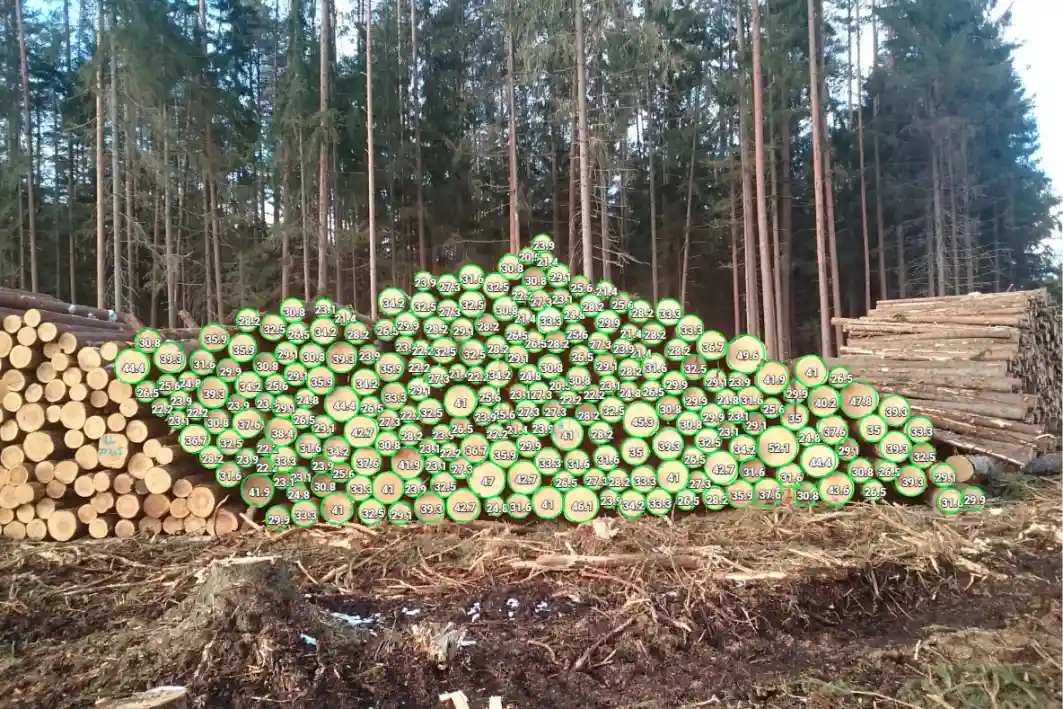As we wrote previously, Timbeter utilizes a machine learning and computerized vision to detect logs.
Meaning that our solution detects the contour area of a log under the bark and converts the contour area to a symmetrical circle; from where the average diameter is calculated. Subsequently, the average diameter is calculated based on the total area of the log.
The process is designed to measure the log surface area as accurately as possible, by converting the irregular shape of the contour area into a perfect circular image. For an accurate diameter measurement, more than 2,000 points per one log counter are detected.
The next step is where our technology enables the software to recognize what’s a log. If you wanted to read how the precise technology works, you can read an interesting previous blog post written by our development team.
For understanding the detection process step-by-step; examine the picture shown below:

When compared to manual measurement, where the scaler usually calculates the average diameter through the narrow and wide axis of the logs, the diameters may differ. But, one point one should consider is that when the most popular Roundwood measurement formulae were developed (and many of them were made more than a hundred years ago), there simply was no other option available for a correct measurement.
Today, technology enables more precise results, besides the convenience of digital data and the fast-sharing of information.
So, here’s a question:
Is it time to create new formulas for Roundwood measurement?
Or,
Maybe a formula that would be based on large datasets considering the whole surface of the log?
We want to know from you:
- what are the biggest challenges in order to get the most precise results?
Let us know and make Timbeter even better.
